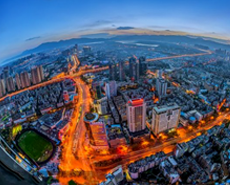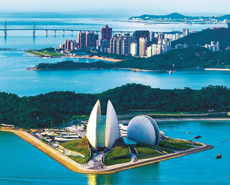
Chinese steel market demand promising in Q1
----Interview with Haifeng Liu
Director of General Information Department
Tangshan Ganglu Iron and Steel Co.
Director of General Information Department
Tangshan Ganglu Iron and Steel Co.
Established in 2001, Tangshan Ganglu Iron and Steel Co. focuses on energy conservation and consumption reduction to improve economic efficiency; strengthens basic management to accelerate the pace of enterprise construction; uses technological advancement to enhance the market competitiveness of enterprise. In 2020, Tangshan Ganglu Iron and Steel Co. ranked first among the B-level enterprises in the environmental performance rating of Tangshan.
Asian Metal: Good afternoon, Mr. Liu. Thanks a lot for agreeing to the interview. Please briefly tell us about the history of Ganglu Steel and the equipment composition.
Mr. Liu: My pleasure. With the registered capital of USD24.094 million, Tangshan Ganglu Iron and Steel Co. was founded in 2001 and launched production gradually in 2002, with the designed annual production capacity of 6 million tons. Ganglu Iron and Steel Co. acts as a modern steel joint processing enterprise integrating mining, beneficiation, sintering, ironmaking, steelmaking, rolling, coking, and power generation. Nowadays, GangluIron and Steel Co. owns six blast furnaces with four 1,080 cubic meters and two 630 cubic meters. The mill has five converters, three 75t and two 150t. Besides, GangluIron and Steel Co. owns two HRC production lines (1,450mm, 1,700mm), with an annual production capacity of 7 million tons, together with one 1,450mm CRC production line, with an annual production capacity of 1.5 million tons. In addition, the mill has a coking plant, with the annual production capacity of 1.4 million tons.


Asian Metal: Where does Ganglu Steel sell products to? How about downstream industries and customers?
Mr. Liu: For HRC, we deliver 50% to North China and South China respectively. For CRC, we send 50% materials to North China,15% to East China and 15% to South China. We could produce CRC with the thickness of below 0.5mm, with 90% sent to downstream end users directly from industries such as CR processing and pipe making industries.


Asian Metal: "Lucid waters and lush mountains are invaluable assets". What new investment and progress does Ganglu Steel achieve on the road to green development in 2021? How does the dual energy consumption control policy influence Ganglu Steel's production? How about the production cut during the Winter Olympics Games?
Mr. Liu: Ranking first among the B-level enterprises in the environmental performance rating of Tangshan, we aim at A-level environmental protection rating this year. Our environmental protection investment mainly involves two aspects. First, to achieve the ultra-low emissions of exhaust gas. We committed to in-depth management of organized and unorganized emissions from the plant area. Up to now, all exhaust gas achieved ultra-low emissions. Second, the clean transportation. It covers three transportation modes: fire transportation, water transportation and automobile transportation. Until now, we invested RMB3 billion (USD471 million) in the construction of special railway lines from the factory to Caofeidian Port and Jingtang Port. At the same time, we invested RMB300 million (USD47.1 million) to purchase 200 electric cars and supporting charging piles for material transportation across the factory. We failed to produce normally since early this year under the dual energy consumption control policy and maintain the 30% production cut continuously. We did not receive any formal notification about the production cut during the Winter Olympics Games till now.


Asian Metal: Prices of HRC kept rising during February and early May in 20, with the total markup of around RMB1,900/t (USD298/t) (43%), and they dropped suddenly from the middle of May. Prices changed frequently and narrowly from June to early October, but decreased again during late October and late November. What do you think are the main reasons?
Mr. Liu: Absolutely, the market price of HRC fluctuated like a roller coaster this year. Personally, I think the supply and demand plays negligible role. The influencing factors mainly reflect in two aspects. Firstly, the capital. After the epidemic, the governments of various countries led by the United States vigorously implemented economic stimulus policies and over-issued currencies, which triggered global inflation and price increase. Secondly, the policy guide, which indicates the macro-control of the country.


Asian Metal: How about the current downstream demand?
Mr. Liu: It is estimated that the domestic steel consumption would reach 954 million tons in 2021, downby 4.7% YoY, and the output of crude steel might achieve 1.04 billion tons, down by 2.3% YoY. Generally speaking, the demand from downstream industries remains relatively steady. Though it stays not strong, it remains not bad enough to drag prices to drop sharply. Nowadays, end users purchase strictly according to orders for final products, just as they did in the first half of the year.
















